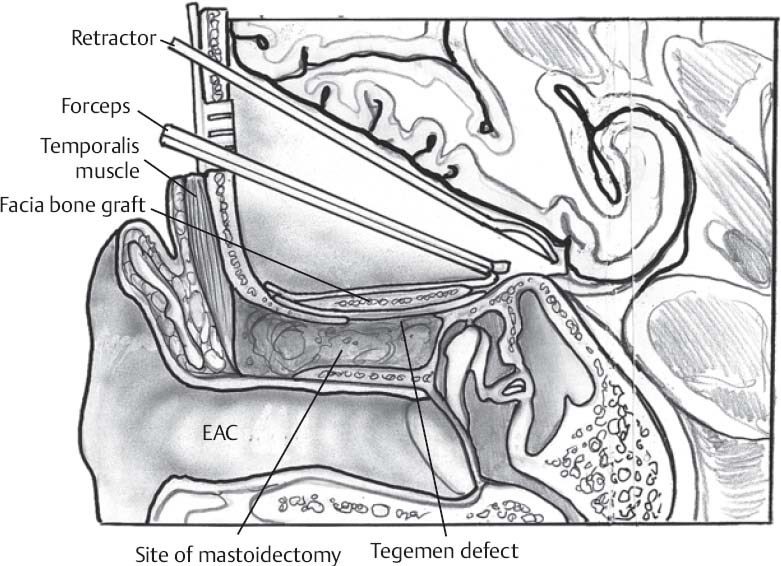♦ Preoperative
Operative Planning
- Review imaging studies including radionucleotide studies
Equipment
- Mayfield head holder or horseshoe headrest
- Basic craniotomy tray
- High-speed drill
- Bone flap fixation tray
- Lumbar spinal drain
Operating Room Set-up
- Headlight and loupes
- Bipolar and Bovie cautery
Anesthetic Issues
- Preoperative intravenous antibiotics 30 min prior to incision
- Lumbar drain is inserted preoperatively
- Management of intracranial pressure: hyperventilation to pCO2 of 25 to 30 mm Hg, mannitol 0.5 to 1 g/kg intravenously starting at time of skin incision, propofol (if indicated)
♦ Intraoperative
Positioning
- Patient supine with neck flexed
Planning of Incision and Shave
- Bicoronal or modified bicoronal incision for approaches to anterior skull base
- With electrical clippers, a strip shave is performed approximately 1 cm in width over the planned incision
Sterile Scrub, Prep, and Drape
- As for standard craniotomy (see General Craniotomy, Chapter 2)
Incision and Scalp Flap
- Incision is infiltrated with lidocaine with epinephrine
- Operative timeout with anesthesia and nursing is performed to confirm procedure
- Incision is performed down through galea, sparing periosteum
- Raney clips or bipolar cautery are used to control scalp bleeding
- Scalp flap can usually be dissected free from temporalis muscle and reflected anteriorly without having to incise the temporalis fascia or muscle
- Pericranial flap is carefully dissected, reflected anteriorly, and wrapped in a moist gauze
Craniotomy and Extradural approach
- Depending on suspected location of CSF leak, a frontal or bifrontal craniotomy is performed.
- The dura is carefully elevated from the skull base and examined for obvious defects.
- Any defects are repaired by first circumferentially mobilizing the surrounding dura and then closing the defect primarily with 4–0 Nurolon reinforced with fibrin glue.
- If a defect cannot be repaired primarily, muscle, fascia, or a free flap of pericranium may be used as graft material to close the defect.
- Certain CSF fistulas (i.e, Middle cranial fossa) can be repaired by a primarily extradural approach (Fig. 68.1), while others will require intradural exploration
Intradural Exploration and Repair
- The dura is opened and reflected anteriorly
- CSF is removed from the lumbar drain in increments of 5 mL until adequate brain relaxation is obtained
- The frontal poles are gently retracted posteriorly to expose the floor of anterior fossa
- Any dural defects are visualized and repaired either intra- or extradurally
- The dural repair is reinforced with muscle, fascia, or a free flap of pericranium along with fibrin glue
- The dural incision is closed while the operative field is irrigated thoroughly to ensure adequate repair of all dural defects
- The pericranial flap is then placed between the dural defects and the floor of the anterior cranial fossa
- The pericranial flap is sutured to the dura with 4–0 Nurolon and the suture line is reinforced with fibrin glue
Cranialization of Frontal Sinus
- In general, if the posterior table of the frontal sinus is violated, then the sinus must be cranialized.
< div class='tao-gold-member'> Only gold members can continue reading. Log In or Register to continue
Only gold members can continue reading. Log In or Register to continue
Stay updated, free articles. Join our Telegram channel

Full access? Get Clinical Tree






